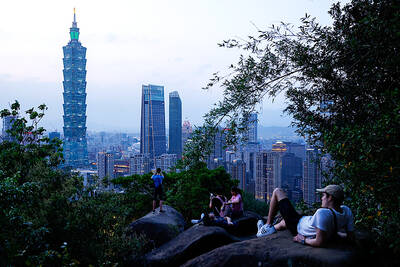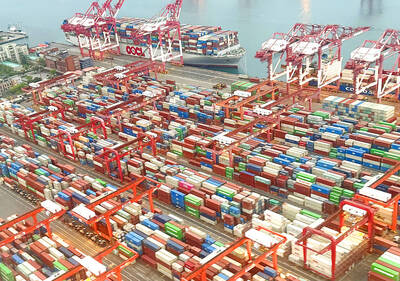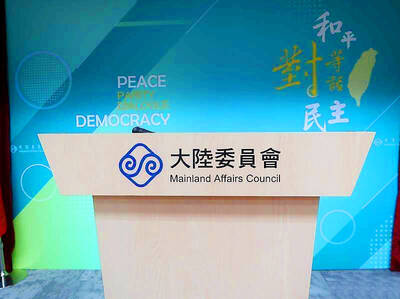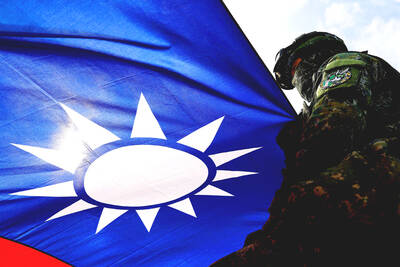When the atom bomb “Fat Boy” devastated Nagasaki 65 years ago today, one of the buildings reduced to rubble was the city’s Urakami Cathedral — then among the largest churches in Asia.
The blinding nuclear flash that claimed more than 70,000 lives in the city also, in an instant, blew out the stained glass windows of the church, toppled its walls, burnt its altar and melted its iron bell.
However, in what local Christian followers have likened to a miracle, the head of a wooden Virgin Mary statue survived amid the collapsed columns and scorched debris of the Romanesque church flattened on Aug. 9, 1945.
The appearance of the war-ravaged religious icon is haunting. The Madonna’s eyes have become scorched, black hollows, the right cheek is charred, and a crack runs like a streaking tear down her face.
“When I first saw [the damaged statue], I thought the Virgin Mary was crying,” said Shigemi Fukahori, a 79-year-old parishioner at the church who remembers the statue before the explosion that destroyed the cathedral that is called St Mary’s in English.
“I thought it’s as if the Virgin Mary is telling us about the misery of war by sacrificing herself,” Fukahori said, quietly gazing at the statue. “This is a significant symbol of peace, which should be preserved forever.”
The remains of the statue of the Virgin Mary have found a new home inside a rebuilt church, also called St Mary’s, built on the same site, only 500m from the bomb’s ground zero.
However, the powerful relic has also traveled widely as a symbol of peace — most recently to New York for a UN nuclear disarmament conference in May, when it was also taken to a mass at the city’s St Patrick’s Cathedral.
UN Secretary-General Ban Ki-moon, who saw the statue in the US city, visited Nagasaki to be reunited with it on Thursday before attending a peace memorial ceremony in Hiroshima.
On their way to New York, the Nagasaki religious leaders carried the statue to the Vatican, where it was blessed by Pope Benedict XVI, and to a ceremony in Guernica, Spain, to mourn the victims of Nazi air attacks during the Spanish Civil War.
“We traveled overseas with the statue, with the idea that we would like to ask the Virgin Mary to act for peace,” Joseph Mitsuaki Takami, the archbishop of Nagasaki, said in an interview. “There are many ways to make such an appeal — through pictures, film or narratives about the horror — but the atomic-bombed Mary appears to have a different power to tell us about it.”
Nagasaki, a southwestern port city, was Japan’s sole gateway to the outside world during much of the Edo era (1603 to 1868) when the country retreated into self-imposed isolation.
The Edo era’s Tokugawa Shogunate imposed anti-Christian edicts in the early 17th century, oppressing Christians and banishing European priests.
Some believers were martyred and others secretly maintained their creed as “hidden Christians” for more than 200 years until Japan reopened under the Meiji era that began in the late 19th century.
Some 8,500 local Christians were killed in the Nagasaki bombing.
Brother Thomas Ozaki Tagawa, speaking for other local Christians, said many were puzzled by why the US attacked Nagasaki, Japan’s largest Christian community.
While many of the survivors try to see the tragedy as a tribulation handed to them by God, their agonies are still rooted deeply in their minds.
“I was too sad to cry because it was simply too merciless,” said Fukahori, who survived inside a Nagasaki factory when the mushroom cloud rose.
“Many survivors are still suffering the after-effects of the radiation,” Fukahori said. “All I can do is to pray for them. I hope Nagasaki will be the last place ever to fall victim to an atomic bomb.”
Many Americans believe the bombs were necessary to bring a quick end to the war and avoid a bloody land invasion, but the archbishop disagrees.
“Japan killed millions in Asia, but that doesn’t mean dropping atomic bombs is justified,” he said. “Possessing nuclear weapons in itself is a sin.”
Mayor Tomihisa Taue said: “People simply need to use the power of their imagination and consider how it would be if this happened to their family or friends. You can easily imagine that when you visit Nagasaki or Hiroshima.”

MORE VISITORS: The Tourism Administration said that it is seeing positive prospects in its efforts to expand the tourism market in North America and Europe Taiwan has been ranked as the cheapest place in the world to travel to this year, based on a list recommended by NerdWallet. The San Francisco-based personal finance company said that Taiwan topped the list of 16 nations it chose for budget travelers because US tourists do not need visas and travelers can easily have a good meal for less than US$10. A bus ride in Taipei costs just under US$0.50, while subway rides start at US$0.60, the firm said, adding that public transportation in Taiwan is easy to navigate. The firm also called Taiwan a “food lover’s paradise,” citing inexpensive breakfast stalls

TRADE: A mandatory declaration of origin for manufactured goods bound for the US is to take effect on May 7 to block China from exploiting Taiwan’s trade channels All products manufactured in Taiwan and exported to the US must include a signed declaration of origin starting on May 7, the Bureau of Foreign Trade announced yesterday. US President Donald Trump on April 2 imposed a 32 percent tariff on imports from Taiwan, but one week later announced a 90-day pause on its implementation. However, a universal 10 percent tariff was immediately applied to most imports from around the world. On April 12, the Trump administration further exempted computers, smartphones and semiconductors from the new tariffs. In response, President William Lai’s (賴清德) administration has introduced a series of countermeasures to support affected

CROSS-STRAIT: The vast majority of Taiwanese support maintaining the ‘status quo,’ while concern is rising about Beijing’s influence operations More than eight out of 10 Taiwanese reject Beijing’s “one country, two systems” framework for cross-strait relations, according to a survey released by the Mainland Affairs Council (MAC) on Thursday. The MAC’s latest quarterly survey found that 84.4 percent of respondents opposed Beijing’s “one country, two systems” formula for handling cross-strait relations — a figure consistent with past polling. Over the past three years, opposition to the framework has remained high, ranging from a low of 83.6 percent in April 2023 to a peak of 89.6 percent in April last year. In the most recent poll, 82.5 percent also rejected China’s

PLUGGING HOLES: The amendments would bring the legislation in line with systems found in other countries such as Japan and the US, Legislator Chen Kuan-ting said Democratic Progressive Party (DPP) Legislator Chen Kuan-ting (陳冠廷) has proposed amending national security legislation amid a spate of espionage cases. Potential gaps in security vetting procedures for personnel with access to sensitive information prompted him to propose the amendments, which would introduce changes to Article 14 of the Classified National Security Information Protection Act (國家機密保護法), Chen said yesterday. The proposal, which aims to enhance interagency vetting procedures and reduce the risk of classified information leaks, would establish a comprehensive security clearance system in Taiwan, he said. The amendment would require character and loyalty checks for civil servants and intelligence personnel prior to